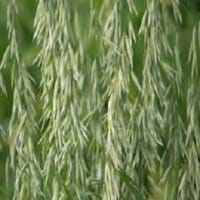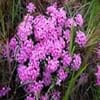Life Span
Perennial
Annual
Type
Broadleaf Evergreen
Grass
Origin
World/Pandemic
Hybrid origin, Europe
Types
Bigleaf hydrangea, Hortensia, Smooth hydrangea, Oakleaf hydrangea, Annabelle
Not Available
Number of Varieties
Not Available
Habitat
Forest edges, Hillside, Woods
Farms
USDA Hardiness Zone
12-15
Not Available
AHS Heat Zone
Not Available
10 - 1
Sunset Zone
21,22
1a, 1b, 2a, 2b, 3a, 3b, 4, 5, 6, 7, 8, 9, 14, 15, 16, 17, 18, 19, 20, 21, 22, 23, 24
Habit
Upright/Erect
Clump-Forming
Flower Color
Not Available
Green, Light Green
Flower Color Modifier
Bicolor
Bicolor
Fruit Color
Burgundy, Brown
Not Available
Leaf Color in Spring
Purple, Burgundy, Bronze
Light Green, Gray Green
Leaf Color in Summer
Purple, Burgundy, Bronze
Light Green
Leaf Color in Fall
Purple, Burgundy, Bronze
Light Green, Yellow green, Gold
Leaf Color in Winter
Purple, Burgundy, Bronze
Not Available
Leaf Shape
Oblovate
Linear
Plant Season
Spring, Summer, Fall, Winter
Not Available
Sunlight
Full Sun, Partial Sun
Full Sun
Type of Soil
Clay, Loam, Sand
Loam
The pH of Soil
Acidic, Neutral, Alkaline
Neutral
Soil Drainage
Well drained
Well drained
Bloom Time
Spring, Late Spring, Early Summer, Summer
Late Spring, Early Summer
Tolerances
Drought, Salt
Not Available
Where to Plant?
Container, Ground
Ground
How to Plant?
Seedlings, Stem Planting
Seedlings
Plant Maintenance
Medium
Medium
Watering Requirements
Not Available
Requires a lot of watering, Requires watering in the growing season
In Summer
Xeric/Desert, Drought Tolerant, Average Water
Lots of watering
In Spring
Moderate
Moderate
In Winter
Average Water
Average Water
Soil pH
Acidic, Neutral, Alkaline
Neutral
Soil Type
Clay, Loam, Sand
Loam
Soil Drainage Capacity
Well drained
Well drained
Sun Exposure
Full Sun, Partial Sun
Full Sun
Pruning
Remove damaged leaves, Remove dead branches, Remove dead leaves
Remove damaged leaves, Remove dead branches, Remove dead leaves
Fertilizers
All-Purpose Liquid Fertilizer
All-Purpose Liquid Fertilizer
Pests and Diseases
Red blotch
Red blotch
Plant Tolerance
Drought, Salt
Drought
Flowers
Insignificant
Insignificant
Flower Petal Number
Single
Single
Foliage Texture
Medium
Fine
Foliage Sheen
Glossy
Glossy
Attracts
Bees, Flies
Not Available
Allergy
Chest tightness, Diarrhea, Dizziness, Nausea, Vomiting
no allergic reactions
Aesthetic Uses
Not Available
Not Used For Aesthetic Purpose
Beauty Benefits
Not Available
Not Available
Edible Uses
Not Available
Yes
Environmental Uses
Air purification
Air purification
Medicinal Uses
Fever, Kidney problems, Urinary tract problems
Menstrual Disorders, osteoporosis, Urinary tract problems
Part of Plant Used
Flowers, Root
Whole plant
Other Uses
Not Available
Culinary use, Used for pasture
Used As Indoor Plant
Not Available
No
Used As Outdoor Plant
Yes
Yes
Garden Design
Container, Foundation, Hedges, Mixed Border, Screening, Wind Break
Edible
Botanical Name
DODONAEA viscosa 'Purpurea'
AVENA sativa
Common Name
Hopbush, Purple Hopseed Bush
Oat
In German
Hortensie
Haferpflanze
In French
Hortensia
Plantes d'avoine
In Spanish
Hortensia
planta de avena
In Greek
υδραγεία
φυτό βρώμη
In Portuguese
Hortênsia
aveia planta
In Polish
Hortensja
Owies roślin
In Latin
Hibiscus
Oat plant
Phylum
Not Available
Tracheophyta
Class
Not Available
Liliopsida
Order
Not Available
Poales
Family
Sapindaceae
Poaceae
Genus
Not Available
Avena
Clade
Not Available
Angiosperms, Commelinids, Monocots
Tribe
Not Available
Aveneae
Subfamily
Not Available
Pooideae
Number of Species
Not Available
Not Available
Importance of Purple Hopseed Bush and Oat plant
Want to have the most appropriate plant for your garden? You might want to know the importance of Purple Hopseed Bush and Oat plant. Basically, these two plants vary in many aspects. Compare Purple Hopseed Bush and Oat plant as they differ in many characteristics such as their life, care, benefits, facts, etc. Every gardener must at least have the slightest clue about the plants he wants to plant in his garden. Compare their benefits, which differ in many ways like facts and uses. The medicinal use of Purple Hopseed Bush is Fever, Kidney problems and Urinary tract problems whereas of Oat plant is Menstrual Disorders, osteoporosis and Urinary tract problems. Purple Hopseed Bush has beauty benefits as follows: Not Available while Oat plant has beauty benefits as follows: Not Available.
Compare Facts of Purple Hopseed Bush vs Oat plant
How to choose the best garden plant for your garden depending upon its facts? Here garden plant comparison will help you to solve this query. Compare the facts of Purple Hopseed Bush vs Oat plant and know which one to choose. As garden plants have benefits and other uses, allergy is also a major drawback of plants for some people. Allergic reactions of Purple Hopseed Bush are Chest tightness, Diarrhea, Dizziness, Nausea and Vomiting whereas of Oat plant have no allergic reactions respectively. Having a fruit bearing plant in your garden can be a plus point of your garden. Purple Hopseed Bush has showy fruits and Oat plant has showy fruits. Also Purple Hopseed Bush is not flowering and Oat plant is not flowering . You can compare Purple Hopseed Bush and Oat plant facts and facts of other plants too.


